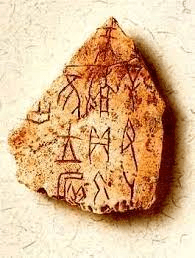This is the oldest civilization in India, which developed around the Indus River Valley.
Harappan Civilization
This is the largest Indian religion today, which developed from the earlier faith called Brahmanism.
Hinduism
This is the name of the historical individual who took on the title of "The Buddha"
Siddhartha Gautama
This was the first dynasty in Chinese history, which was supposedly led by Yu the Great. Archaeologists and Historians don't have any solid evidence to support its existence, so it is considered to be the stuff of legend.
Xia Dyansty
This ancient Chinese thinker lived from around 551 BC to 479 BC. His ideas led to the development of a philosophy based on ethics and respect.
Confucius
This culture rose to power in Eastern India around the Ganges River, and may have taken power after invading India from Central Asia.
Aryans
This concept, which says that people store up rewards or consequences for themselves based on their actions during their life, can either be "good" or "bad" and would have drastic implications for a person's religious and social future.
Karma
This term refers to the ultimate state of peace that Buddhists believe a person can achieve during their lifetime.
Nirvana
This was the longest dynasty in Chinese history (1045 to 221 BC), which overthrew its predecessor because it was being led by a tyrant.
Zhou Dynasty
This philosophy was based on the ideas of promoting ethics in government and respecting the order of the family (a concept called filial piety). This philosophy also taught that government positions should be based on merit and talent, not simply given as a birthright.
Confucianism
This ancient language was developed and used in ancient India (its writing is pictured here).
Sanskrit
This term, called samsara in India, means that a person's spirit, or atman, will be reborn into a new body for an indeterminate number of lives, until achieving salvation.
Reincarnation
According to the Buddha, this is the cause of suffering in the world.
Desire
This is the first dynasty in Chinese history that archaeologists and historians can certify existed, based on evidence. They were led by a warlike aristocracy and developed around the Huang He River.
Shang Dynasty
Known to its followers as "the way," this religion was based on seeking to adhere to the natural order of the universe. The most important concept in this religion is the notion of maintaining a balance between opposites.
Daoism
This social structure, which at one time contained more than 3,000 distinct levels, further subdivided the four varnas (Brahmins, Kshatriyas, Vaisyas, and Sudras) into smaller sub-groups.
Caste System
This group, which made up about 5% of ancient Indian population, was outside of the social hierarchy system and was considered "unclean" by the majority of society.
Untouchables
According to Buddhism, these ideas establish the cause of suffering, and describe how a person can eliminate that suffering from their life.
The Four Noble Truths
This concept said that Chines Dynasties ruled by the authority of "the gods," but required leaders to rule with justice and efficiency. If they failed to do so, then the "gods" would support a new leader.
Mandate of Heaven
He was the founder of the Chinese faith that is simply known as "the way." He was alive during the 5th and 4th centuries BC in China.
Laozi
These sacred texts led to the development of Brahmanism, and continue to be held as holy texts by the largest religion in India today. What are these texts called?
The Vedas
These are religious rituals and rites of passage that are supposed to help prepare a person for the next stage of life. For example, name giving ceremonies are one of these rituals.
samskaras
This term describes the Buddhist practices that a person should follow in their day-to-day life in order to eventually reach ultimate peace.
The Eightfold Path
The first examples of ancient Chinese writing are contained on these artifacts (pictured below):

Oracle Bones